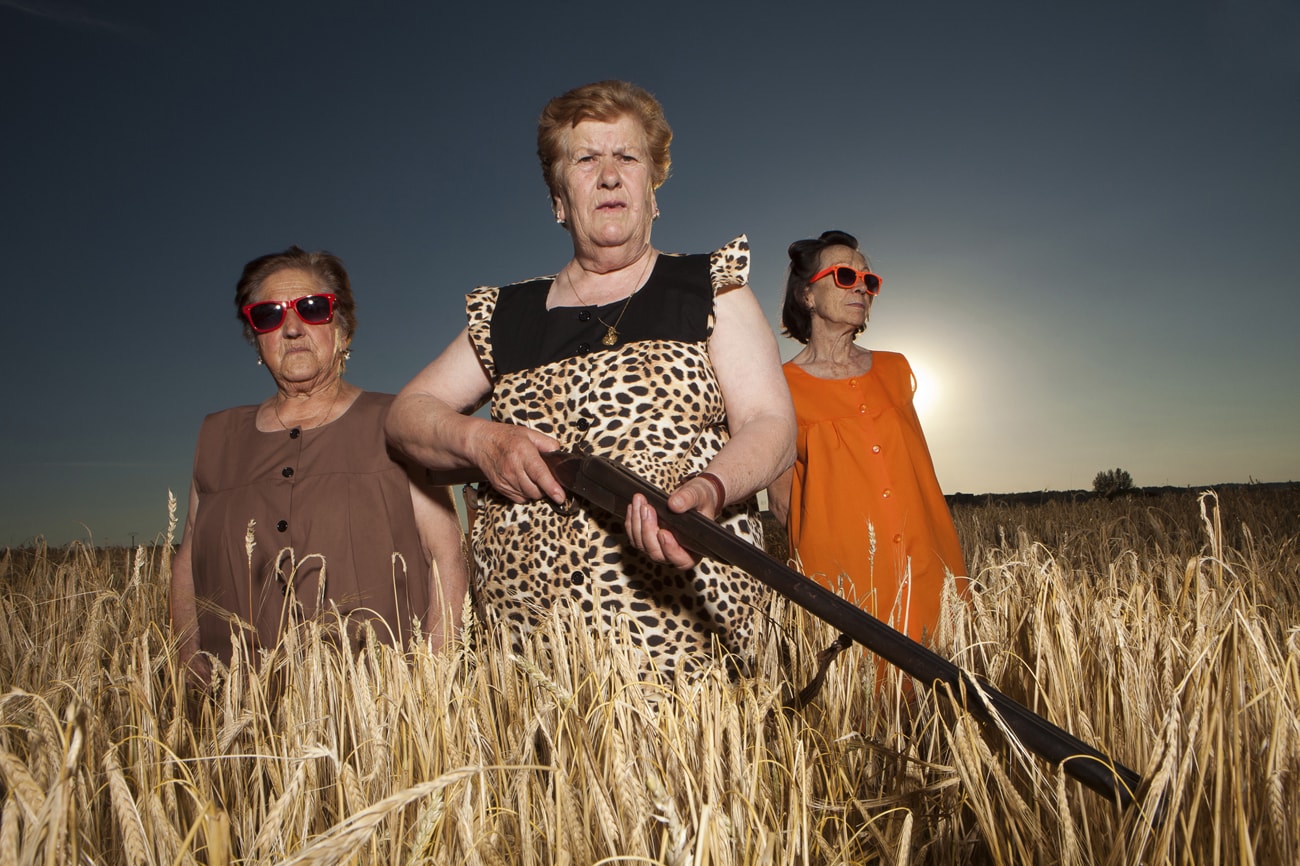
Tribute to La Bata
She was born in Madrid in 1976. Science and art: the genetic tie of her stem cells was regenerated in her life and work. “I am the daughter of Pilar, a fashion designer, and Enrique, an industrial engineer. I call my photographic style Fantastic Anthropology. It combines the study of the human being -although subjective, is science- and the fantasy part is the conceptual approach, poetry”.
Everything Lucía Herrero did is faultless, seen from the standards of talent and effort. Except for the fact that she started taking photos with a stolen camera -but at 12, which makes her unimpeachable-. She studied architecture, and it did not scare her that it was such a long career. She did physical theater. She even invented a name for her method, not to disappoint people trying to understand what she was doing. What would Fantastic anthropology be? A label for scrolling Lucía Herrero’s planet, saturated with vibrant images and invisible red threads that praise how she builds her bonds with unknown people. Some earn the affection of others by cooking desserts or saying compassionate phrases. By being dazzled by some faces or by the ambition of a good cover, Lucía pays love with photos. Each photo is a souvenir of scenes it represents a personal adventure for those who stand on either side of the camera.
Feminists said it when 2020 began: confinement looks like the puerperium. But there is no locked door that threatens Lucia’s ideas. During the first isolation due to the Covid pandemic, she unfolded a work that pushed her to discover the dematerialization of photography and to brand new ways of going around the world until then unexplored.
This introduction would not be accurate if we ignored her Tribute to La Bata. She already had her words before, during, and after a work that breaks hearts not only because of making historical reparation with a whole generation of caregivers.
How did you get involved with photography?
When I was 12 years old, I stole a Nikon F2 from my mother. That she, a fan of photography, had bought with her first salary. At 14 I said, “I want to be a photographer, period.” In between, I studied architecture. It is a very long race, I have little to finish. I also studied physical theater. My 22-year-old economist friends were already working in banks and I, walking around, which confused me. And it turns out that, at one point, in 2009, with the creation of the Tribus series, a language of its own appeared.
I already took good photos, built little stories. But with Tribus, suddenly I meet with the accumulations of my life experiences: physical theater, architecture, the way of traveling, the way of understanding the world, the technique that I had acquired, the flashes that I had bought… put together, and that’s when I coined the term Fantastic Anthropology in response to the question of “And what kind of photography do you do?” I noticed how my work gained interest because it was based on a good term.
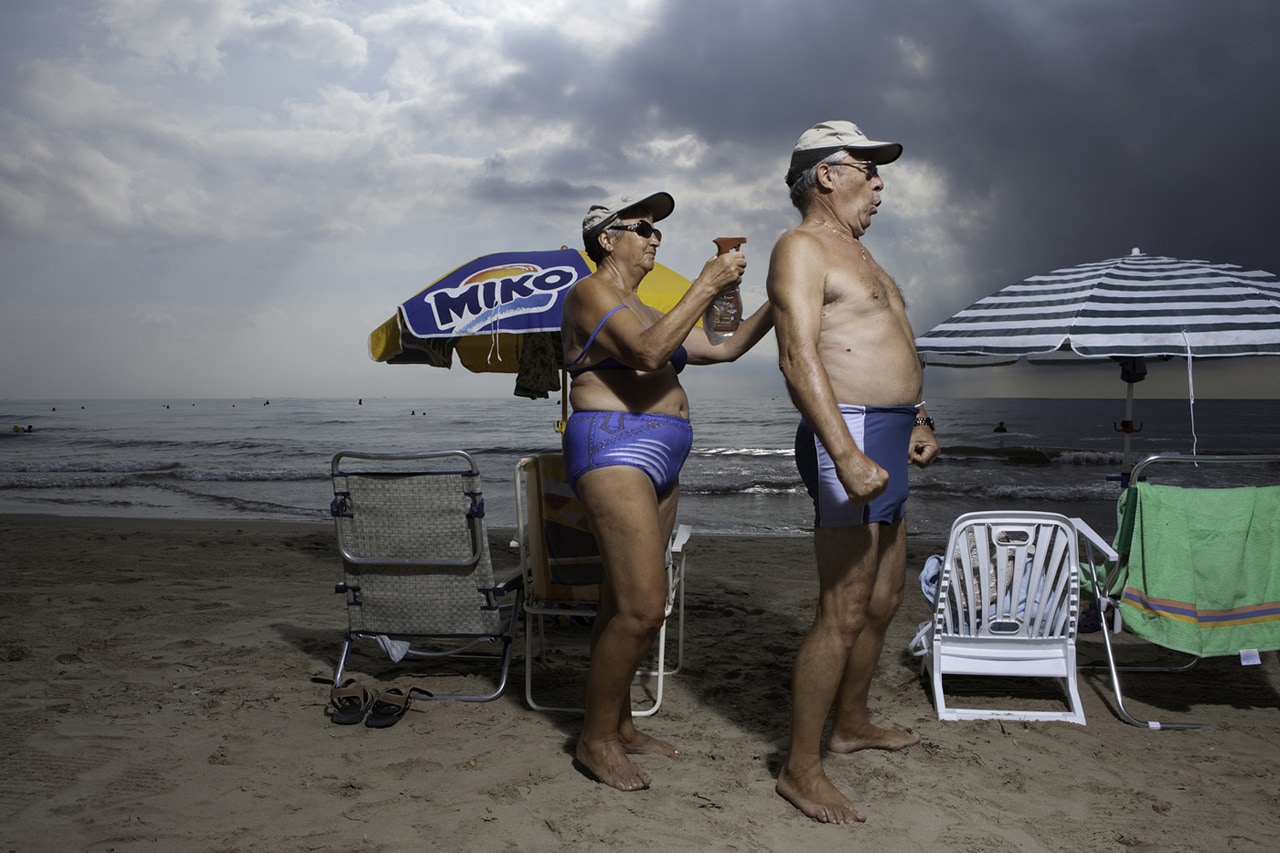
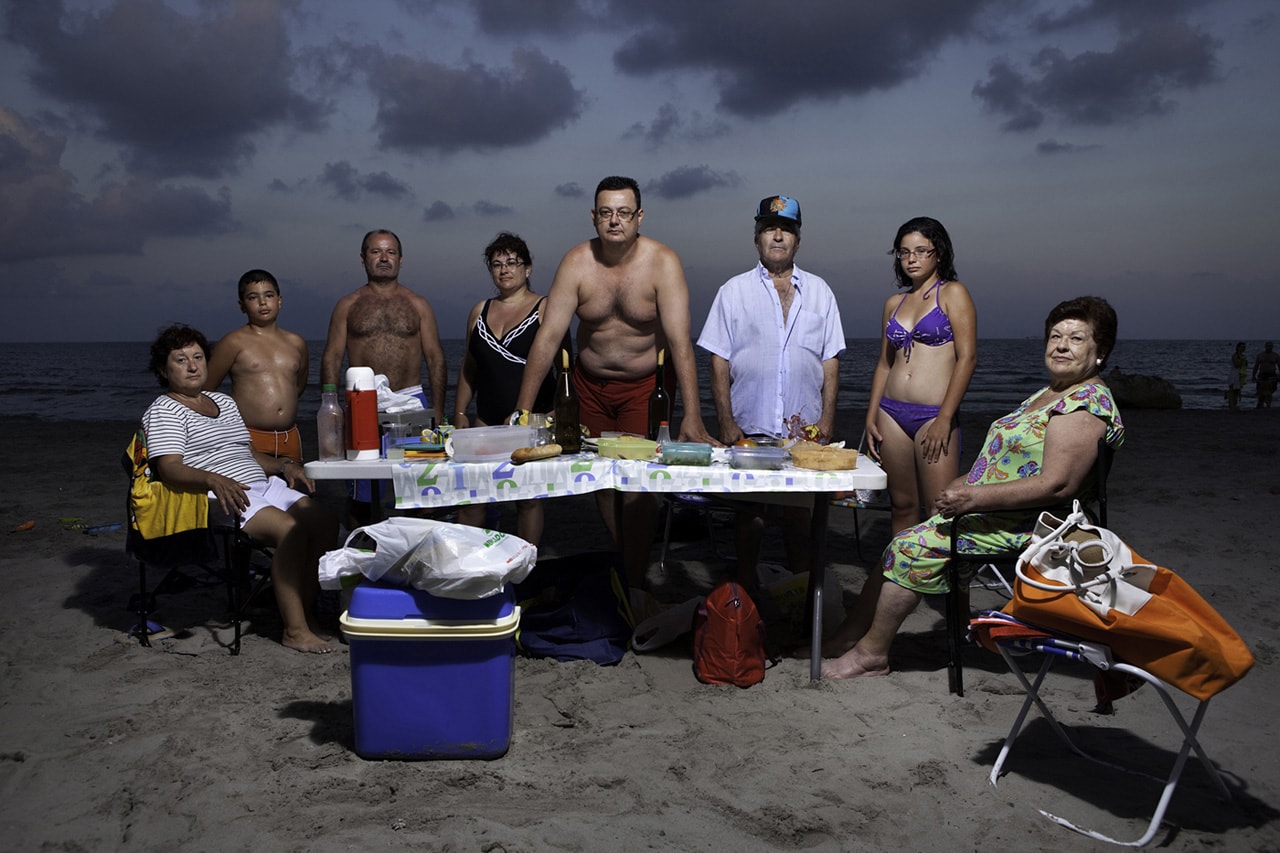
Your formula is reminiscent of “Biodrama,” the theatrical technique based on real stories acted out by its protagonists. For example, veterans of the Malvinas War, England, and Argentina acted together in a play. They put them on stage to write the script based on their dialogue. There is something of that in your photos, something theatrical, a certain improvisation but also construction.
I say it is like choosing reality and turning up the volume to the right point so it keeps the truth. Because in the end, they are real characters and they represent themselves. They always agree. And that makes it possible to polish the day-to-day we do not see. It’s like directing theatrically. My physical theater studies let me understand gestures, human dynamics, hierarchies, movements. And not only in still photos but in continuous images. The still photo is the product of the development of movement, of a human experience. That is why I also like to do and show the making-of, the trip is a very important part of these projects.
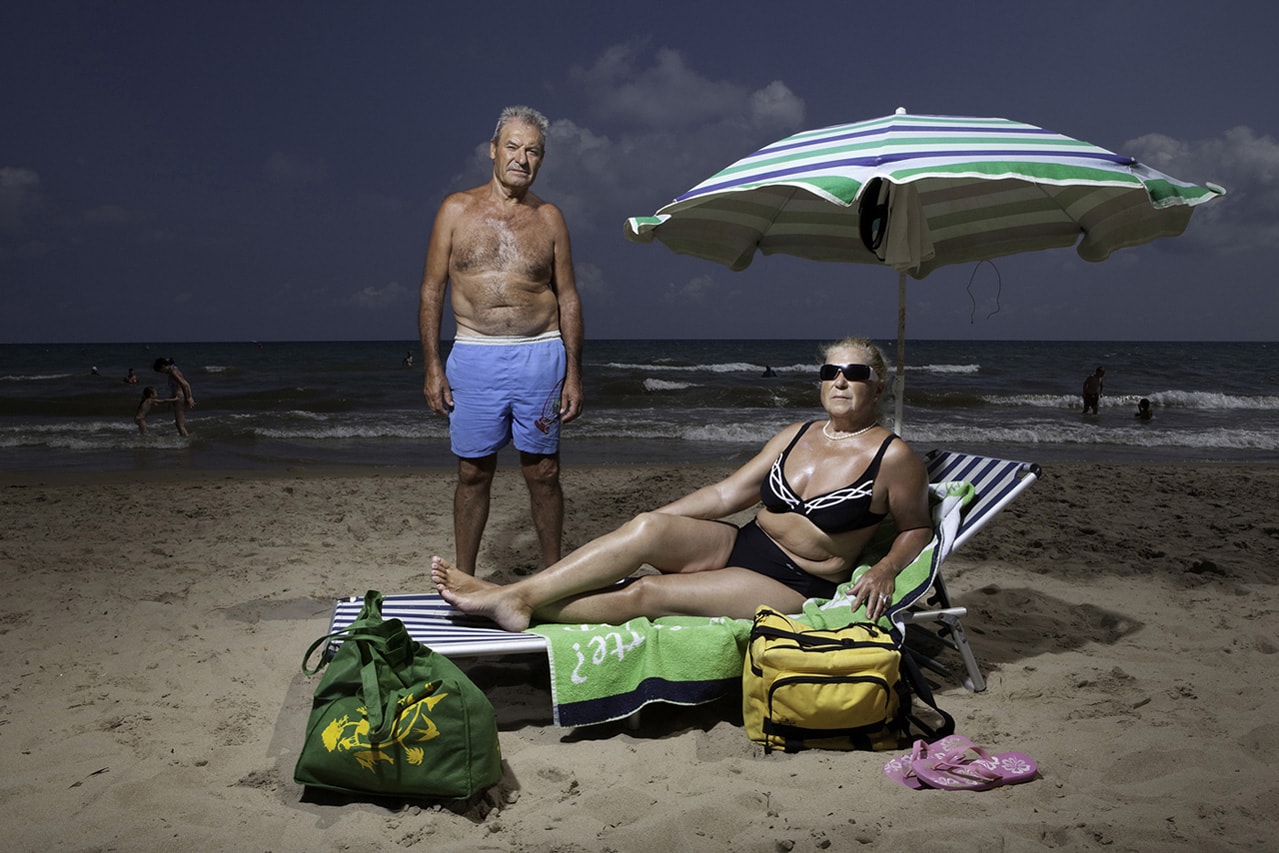
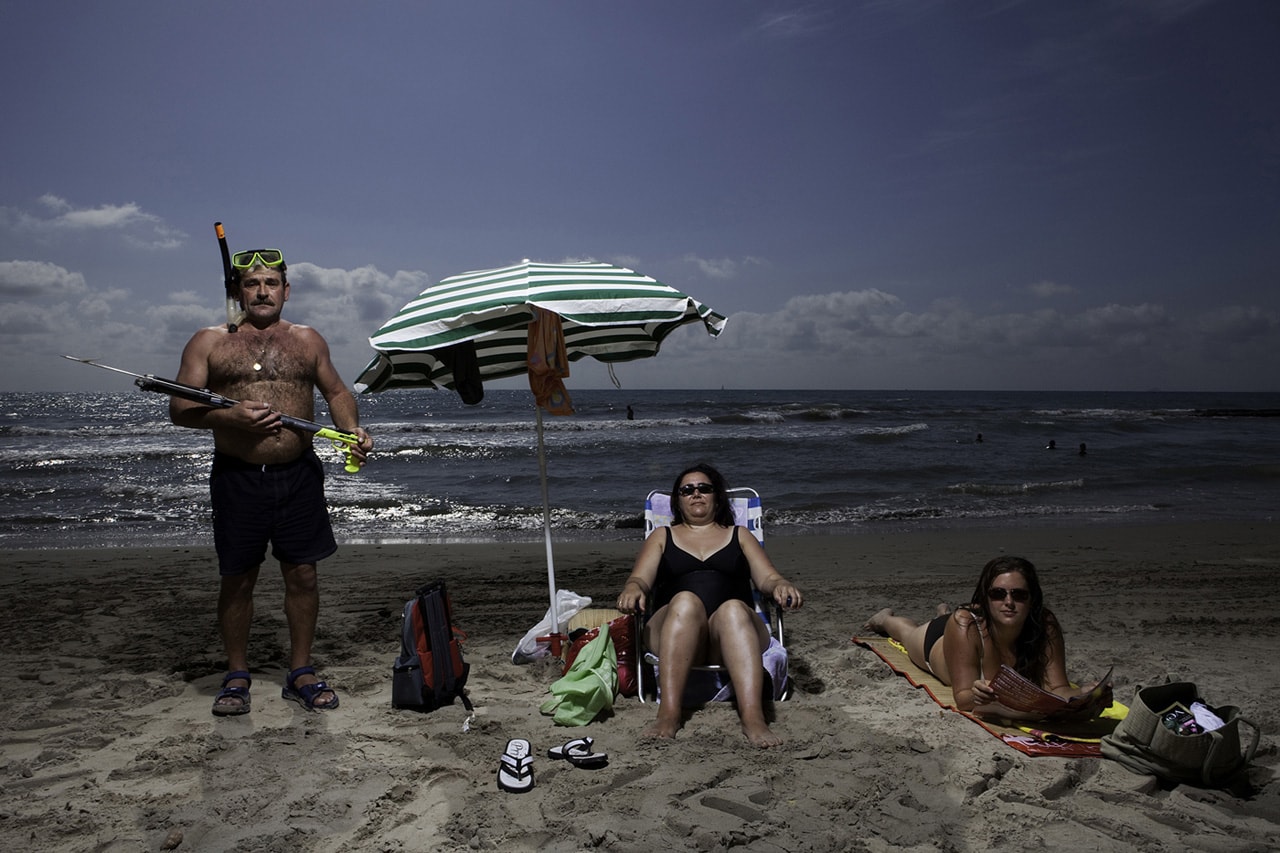
Do you record how you get to the place, how do you connect with people?
Yes, exactly, especially how things develop. Because people agree without knowing exactly what they are going to do. They think I’m going to take a photo of them as normal people and understand what it is: “Get here.” And in the end, not, it is dance and it is theater and you keep pulling, it grows. They do not realize to what extent they are representing themselves. They have a good time. When the session is over, everything has been a dream. It’s like musicals: people are with their lives and suddenly everyone gets together to dance a choreography and, when it’s over, everyone goes back to what they were doing before.
You enable a different space.
Yes, a psychological space. I am interested in experimentation within storytelling because each time different elements are activated. In 2013 they gave me an art residency in Norway to produce. I had only 15 days. I did not know the place or its people. Sure, you can always take a landscape photo but that photo is already taken. So I decided to create the Reindeer Man. I was going to a rural environment where the population density is minimal and also the people are specially reserved. I created the Hombre Reno as a social catalyst. I thought of the reindeer as a national animal. The Hombre Reno is a character who is half-man, half-reindeer, and whose identity crisis drives him to travel and interact. It takes the format of a road movie. During his journey he discovers people and at the same time discovers himself. That was the theory. Interestingly, it worked very well. In fifteen days I removed the entire community and a little beyond.
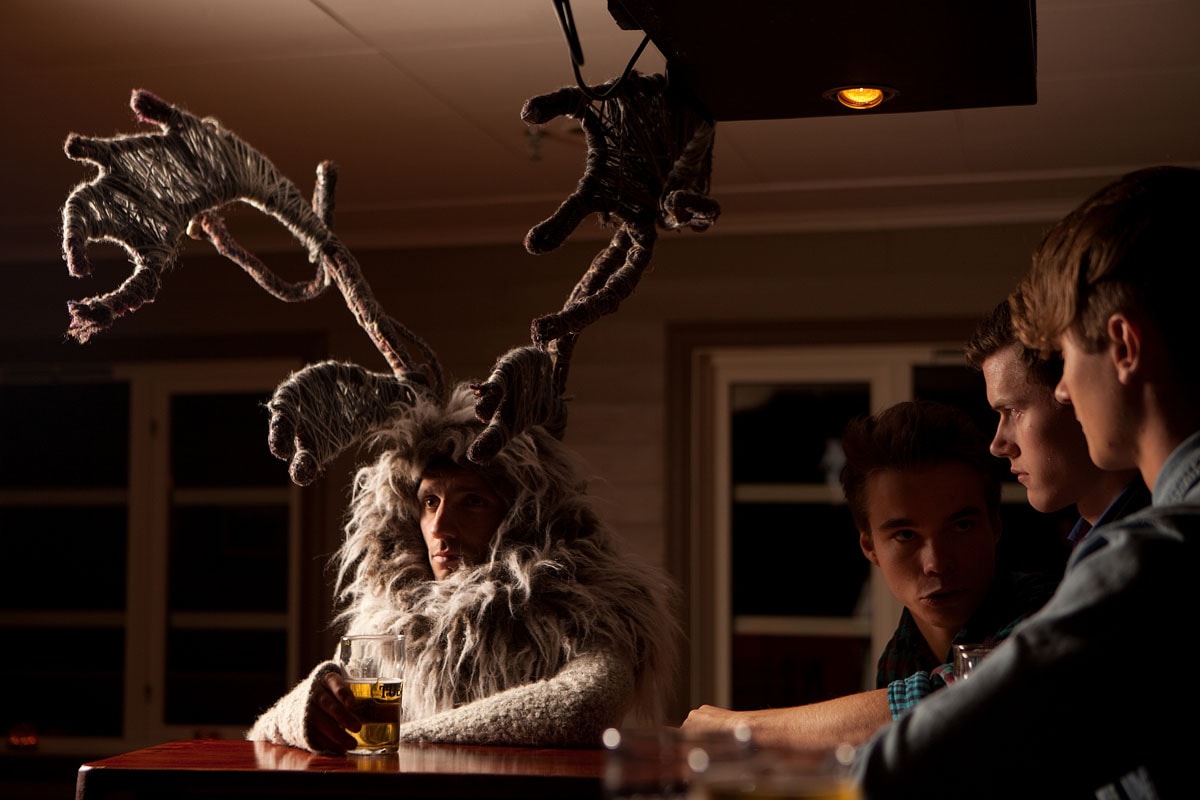
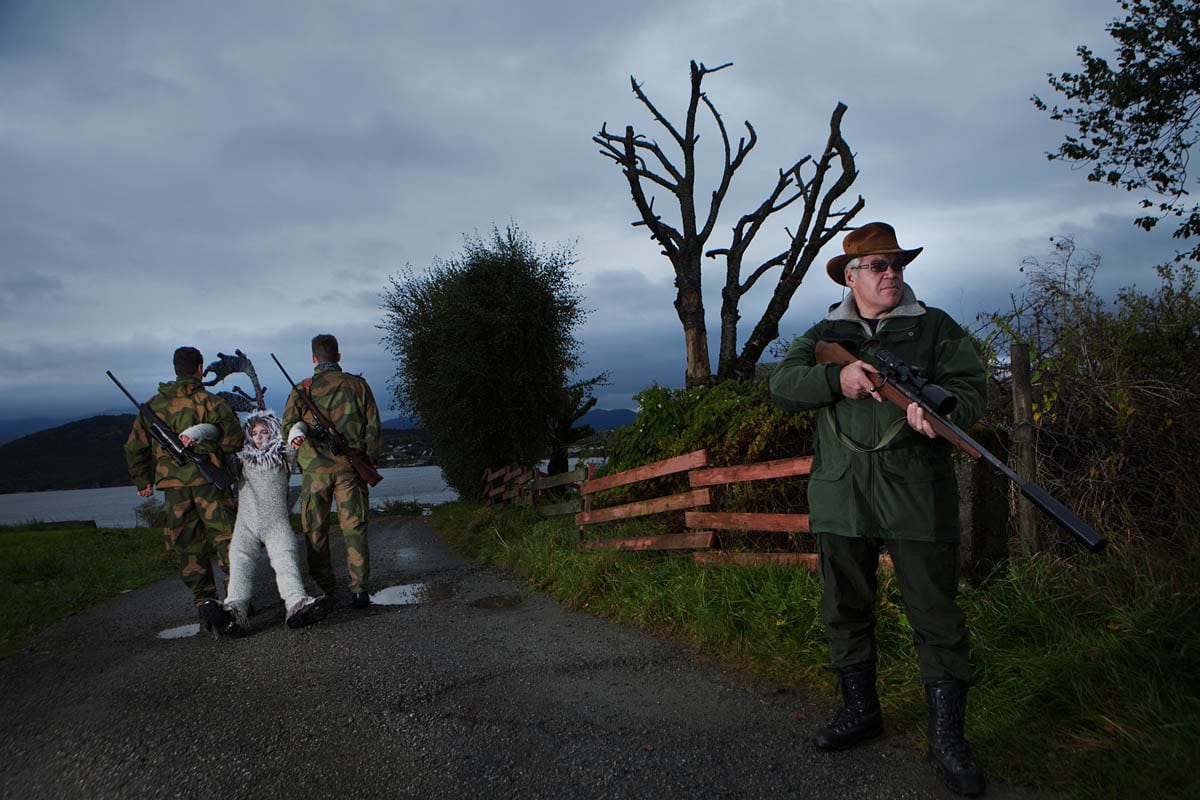
Something similar you achieved by doing Tribute to La Bata. Right?
Yes. I came to that town, Villarmienzo, to photograph a cousin’s wedding. There I met a lady, Constancia, and we hit it off. She is a poet in her privacy because she is ashamed to say that she writes. The women there are conditioned, everything they do is judged by neighbors. At the end of the wedding, she came to say goodbye and half crying she said: «Nice to meet you. It is the last time that we are going to see each other, I am going to die and you are not going to return to this lost town from the hand of God ». So I said, “I’ll be back.” A year later, I came back with this project.
Tribute to La Bata is a tribute to a type of woman. I speak of social, economic, and gender context. I speak of the past, present, and future. And the robe is in the center of the story.
How did you come up with the robe?
I had my daughter in 2013. During the first year of motherhood, I couldn’t go very far and decided to study a postgraduate degree in fashion photography. I was interested in investigating the nexus between the technical and psychological systems of advertising photography and documentary photography. Tribute to La Bata, final thesis, I did it in 2015.
I chose the robe as a fashionable garment that is not subject to the seasonal changes of the commercial world but defines a society. It turns out that this social group, this woman, is in danger of extinction. I started from a garment to give a documentary vision to a type of person and geography. I chose Villarmienzo a town in Castile that is half uninhabited due to the rural exodus where they and their husbands remain, and they still have husbands. Ten or fifteen people are living there.
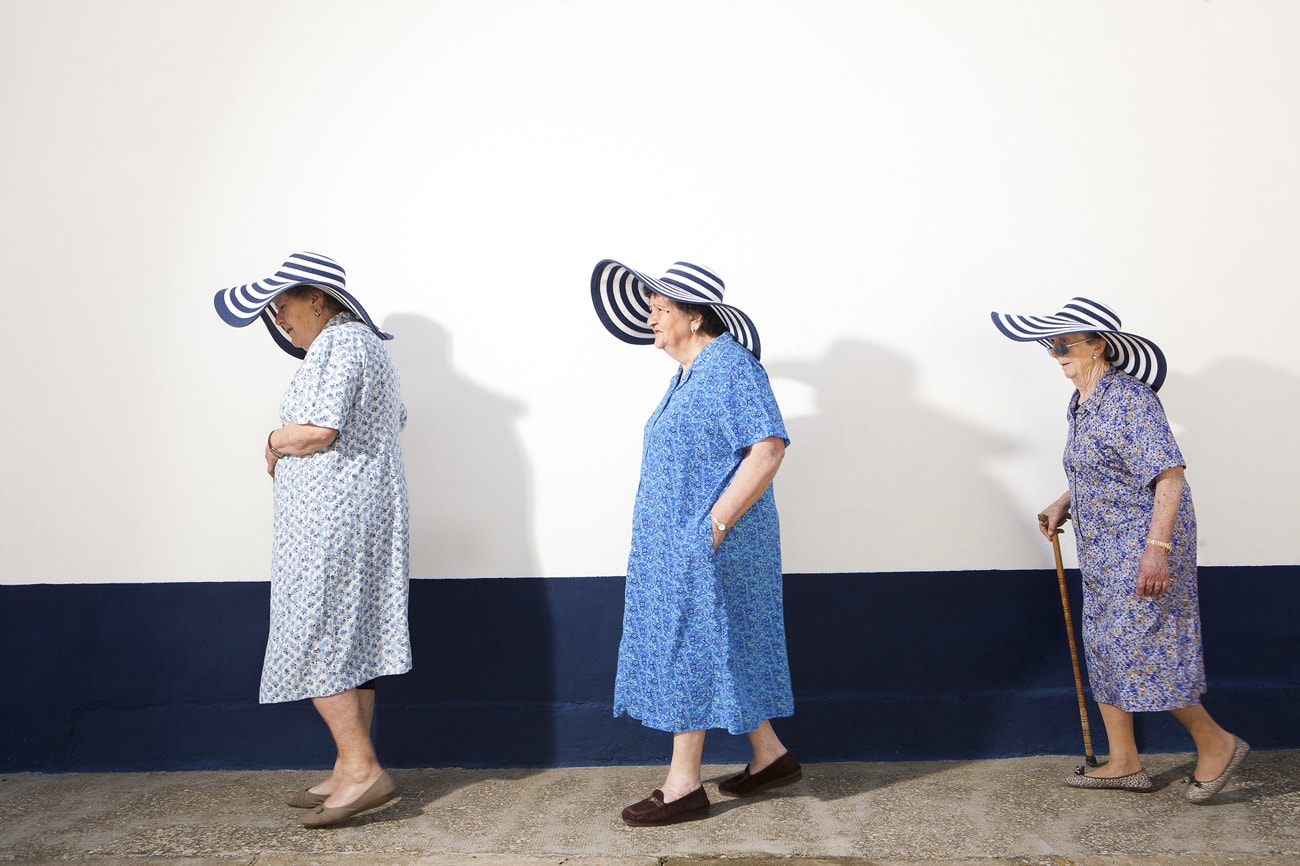
Tribute to La Bata – Lucía Herrero
Was it an epiphany, something you discovered in the course of work, or do you already have that hypothesis?
I discovered it there. It is like opening a package, a gift, without knowing what is inside and you improvise with what you see and build the story as you discover what people are like and how far they can go. It was fun, there was a lot of generosity. They told me: “You are going to kill us,” because they are old ladies and the session was in July in Castilla, with a heat that you will die. Getting them across the street was an odyssey.
They thought I was going to make a portrait of them and that’s it. They were mesmerized when they saw the robes. Then they went crazy and showed the empowered women inside them, who are conditioned by social norms, by gender roles. They had the opportunity to play with their everyday articles, with their landscapes and their walls, their streets and their pots…
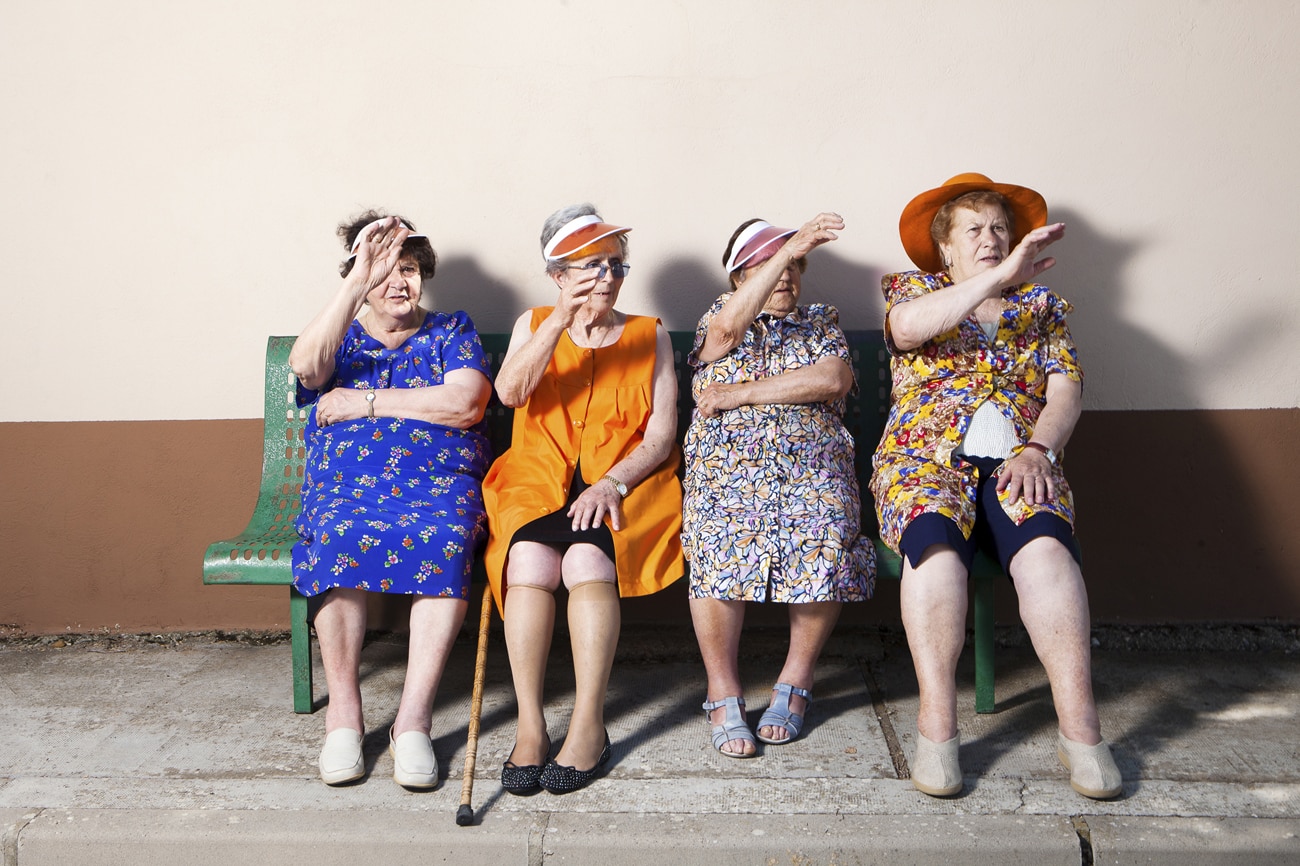
Tribute to La Bata – Lucía Herrero
Do you allow yourself to play and discover things about yourself?
Forever. It is an experience for me. I go browsing, offering, and going through personal processes. It’s an adventure. I arrived in my old van loaded with robes, hats, and everything. It was a very Almodóvar session.
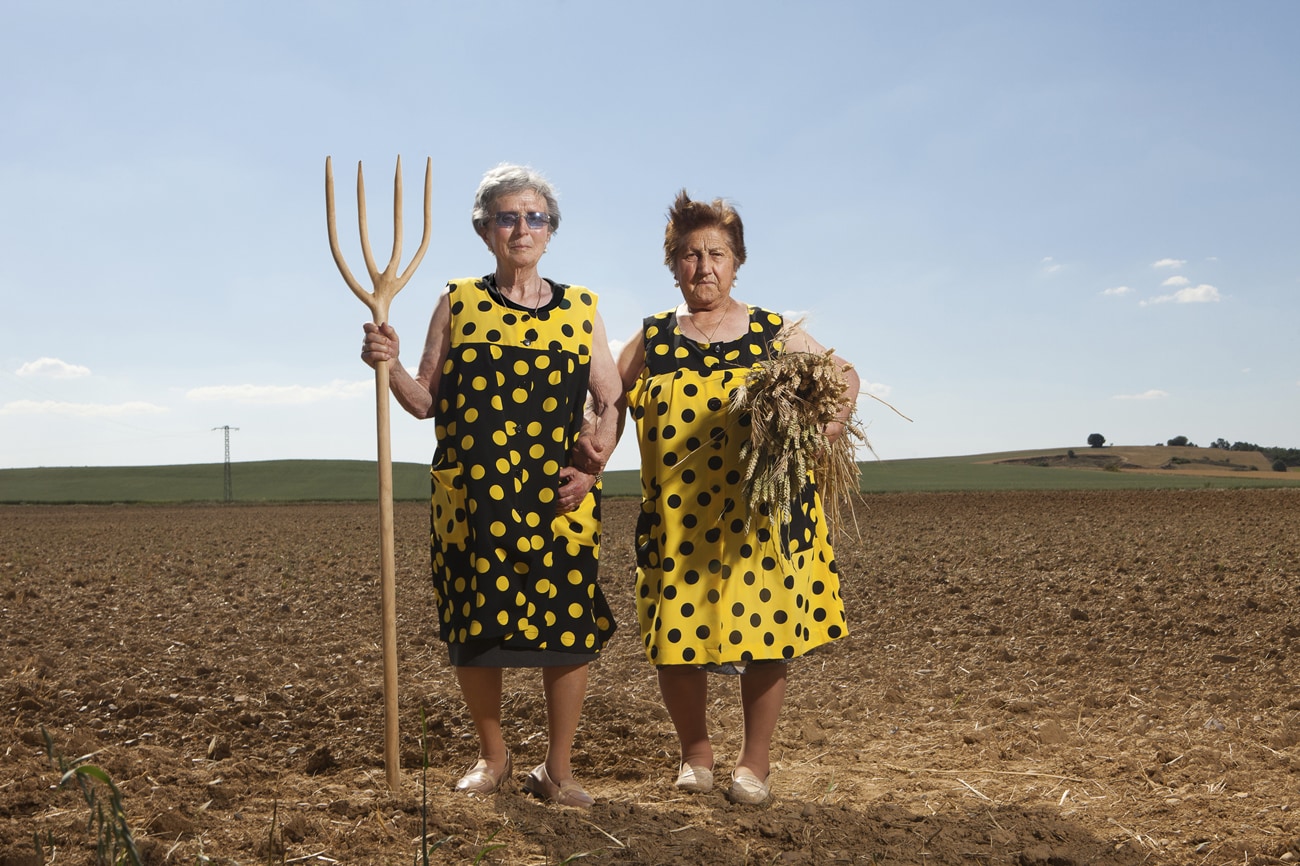
Tribute to La Bata – Lucía Herrero
A woman in a robe makes you think of a mother, a grandmother, a woman who takes care of her and everyone around. Are you a mother? A girl usually appears in your Instagram posts. Maybe with this project, you were discovering things about your motherhood …?
I do my projects very quickly. I arrive, I do, I go. I have a shelf of ideas placed in a brain area. Thus, this lady had been saved for fifteen years. I called her “Mary, mother of everything.” She is the type of lady who has marked my existence and that of many. She lives in the collective memory. They are suffering ladies who have carried on their shoulders the raising of children, husbands, and essentials for the survival of a society. Strength is what I always saw in those robes. They are matriarchs in a patriarchal society, they have been brought up to care for and take responsibility for the family. They are the ones who cooked for 30 at Christmas, even being so important this same society has not given them space to participate: they were not allowed to study, to choose whether to marry or not, whether to have children or not, have a business or property. It was the home and within the home the kitchen because, in the end, the man had the last voice, but they were very strong women and they have been links of change. I don’t think this session has influenced my motherhood, but the presence of this woman has influenced me throughout my life.
I shot the project in 2015, I got a good grade in graduate school and I saved it. My divorce caught me in the middle and a year or so ago I brought it to light again. I started crowdfunding and it went super viral. That has affected them, of course, they suddenly became famous.
I went to visit them in August 2020. They were older, and they told me: “Who was going to tell us at our age that this was going to happen to us?” I think the public’s response has been such because it is as if this tribute had been pending. Their sculpture is missing in a roundabout. There are thousands of sculptures of war heroes or scientists, but there are no monuments to these women. Almodóvar does honor them, I love it.
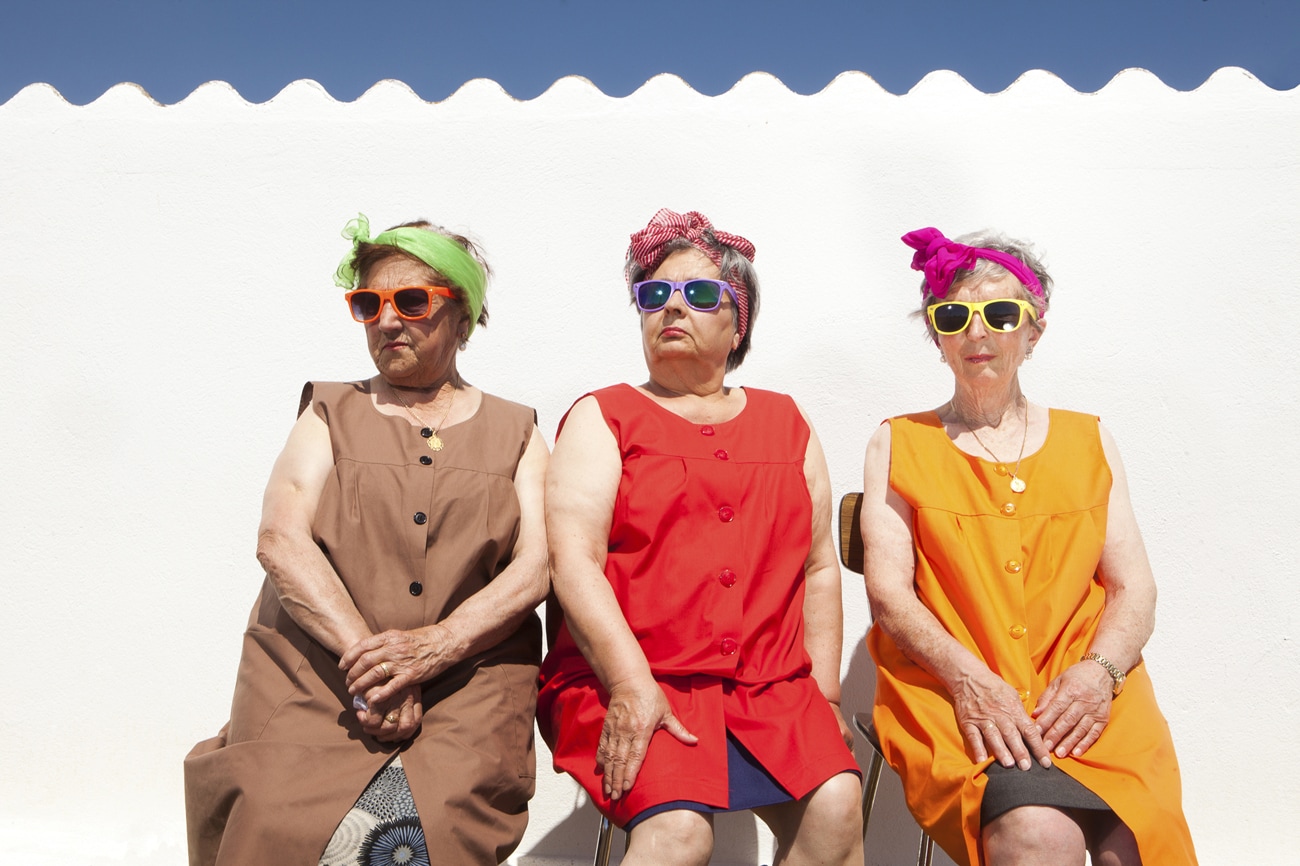
Tribute to La Bata – Lucía Herrero
You considered the robe a fashionable garment. Is there innovation? In the rehearsal, we see robes with animal print and strident colors. Was it your intervention?
I wanted to approach it as if it were a fashion shooting. It was all part of my thesis, of research on the forms that storytelling can take and how two languages of the image come together. Where is the limit? How do they mix? There was a stylistic intervention. I bought classic robes at a gypsy stall at El Rastro. I also designed a collection of robes with different patterns: leopard, colors, dots, and stars. There are also sunglasses, hats, crab sandals…
And where are the robes today?
They are saved, I have them there. If you have more business acumen, I should start a fancy dressing gown business.
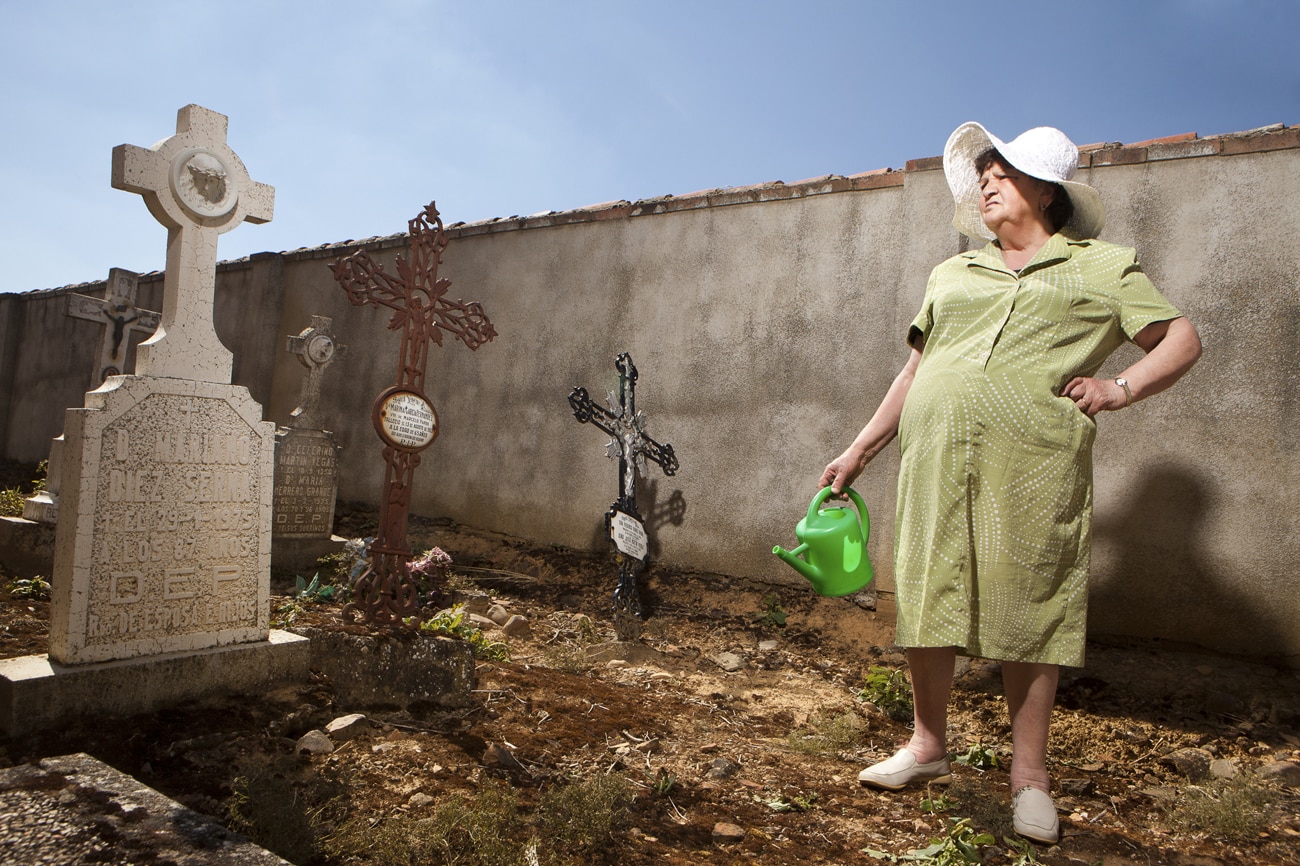
Tribute to La Bata – Lucía Herrero
Many creators bet on crowdfunding. But it is evident you worked a lot: you made it go viral, used tools that allow rewards, appealed to humor, recorded making a video telling the story and exposing yourself and telling.
It is the first time that I did crowdfunding it is something very hard. I chose the Kickstarter platform because it is the largest and most well-known. But being so huge you get lost among millions of projects and they don’t do the promotion. I kept calling the press, trying to get them to publish, I moved it a lot and paid for Facebook advertising. It was crazy. If I were to start crowdfunding again, I would do it differently, I have learned a lot. In the end, even though it’s been in the newspapers and on TV, those who put up the money are your friends and staunch fans.
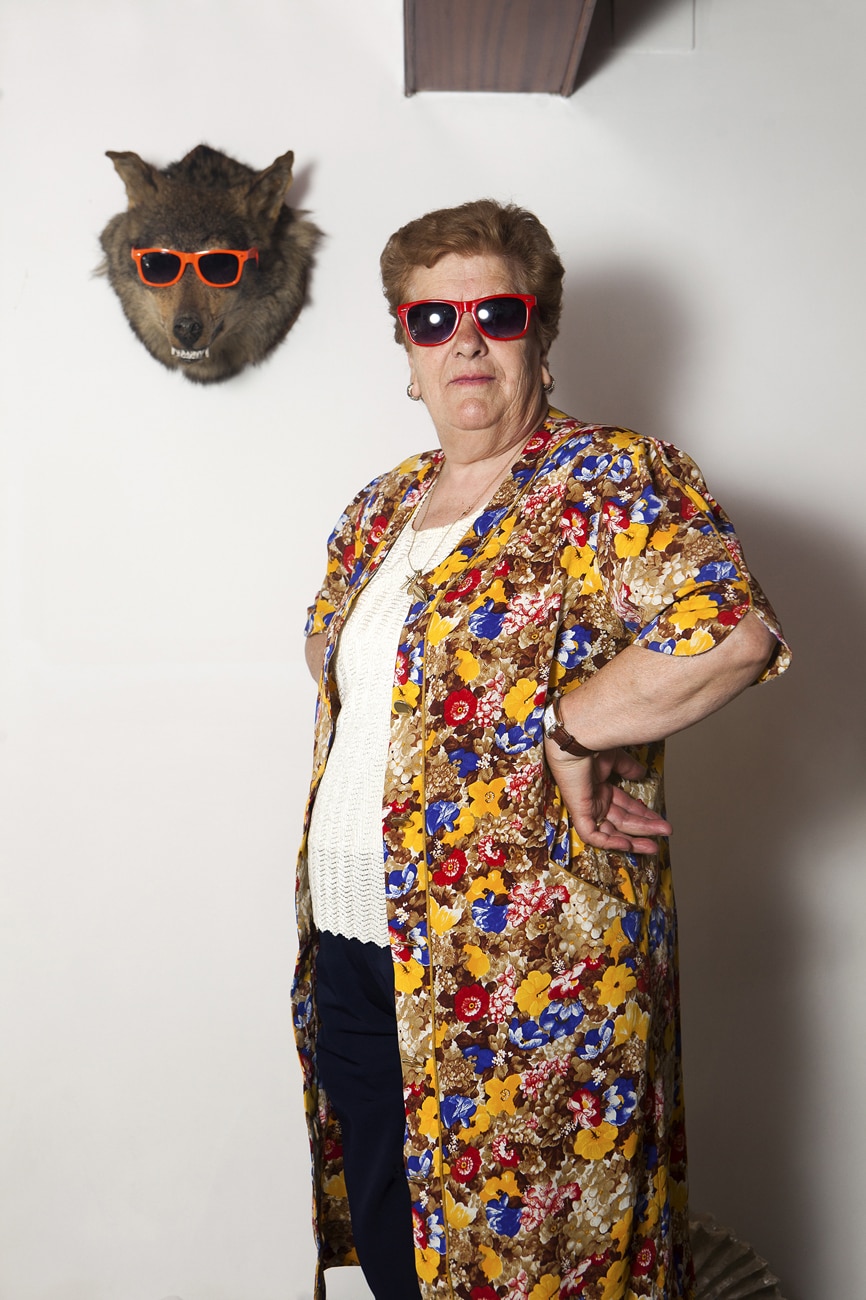
Tribute to La Bata – Lucía Herrero
What is the place of your photography?
There is a very pure visual discourse that concerns me, is my way of expressing my fixations and getting to know myself. Although it also touches some visual consumers who have a feeling similar to mine. I defend that my projects are understandable, that it is not necessary to read a text, that they are “boom” from the start, and that each image is a cover. Another condition is that it has several layers of reading and satisfies both Mrs. Juanita, who is in her house, and an intellectual.
I am interested in polishing everyday life, extracting poetry from day-to-day. I am using color and flash as elements a lot. The flash because it allows me to create a light that is not real is theatrical. Although it is not conditioning: my next work can be in black and white and super muted, almost, almost black.
What is “the” place to share your work?
Where it is appreciated: museum, gallery, press specialized in photography. I also love that ordinary people collect it. In fact, for the Tribute to La Bata series I have put out a popular edition called Crowdfunding Edition because I like that for 50 euros people can have a signed and numbered work to hang on their wall.
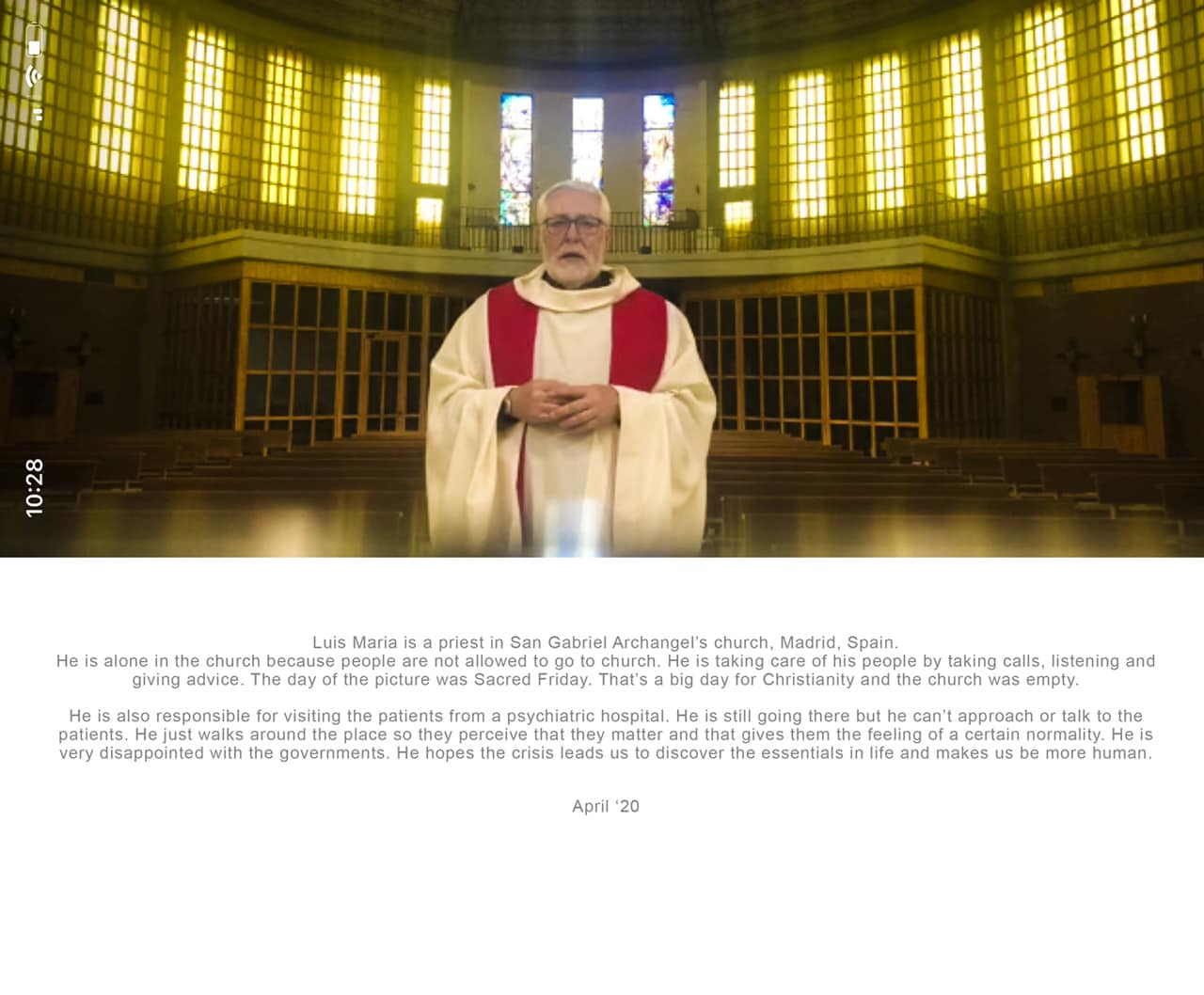
You are documenting the Covid isolation. How is it going?
The first confinement caught us all confused, not knowing what to do or if civilization as we know it was ending. The world turned to telecommute and I decided to do the same. One day I was with my daughter playing on the balcony to reflect the rays of the sun with a mirror and throw light inside the houses of the neighbors of the building opposite and I thought: “I can enter the houses of the people in their confinement through the Internet.” I considered the project of going around the world. As it turned out, I did it in 80 days. I reached the five continents; the idea was to advance exponentially like the virus.
I started through contacts with friends, my “zero patients” always with the same premise of gradually reaching people I do not know. I have come very far, to unusual places. I was able to have control of the image and the composition without having a camera in my hands. I came to a family at the North Pole with a newly hunted polar bear hanging from the front of their house. I have been with the exFARC in Colombia, with rich people on the roof of a skyscraper in Singapore, peasants in India, a priest alone in an empty church, a protector of orangutans in Malaysia, front-line doctors in the hospital. It has been a journey of travel.
Once my models agreed to participate, they wrote to me: “Ok. What do you need?” I asked them for photos of their houses, significant objects, and a story of what was going on inside. They sent me photos of their living room, their bedroom, their bathroom, their dog, where their grandmother knitted. They have even given me a tour of a market in Ghana: they would pick up the mobile and take me around for a walk. I analyzed the photos and sent them a sketch. We coordinated a call at such a time, they had to have their mobile-ready in such a perspective, I gave them instructions. This is in English, in French, in Swahili, in Hindi, and as far as I can. They are images composed to the millimeter. “To the left, not to the right, no, sit down Ok. The dog there, on the sofa ”. I have thrown the quarantine like that.
The images are screenshots, therefore they are of poor resolution. But that pixel enters as part of the philosophical essay and the side of my screen is also recorded in the image, with the time, the status of the battery, and my wifi.
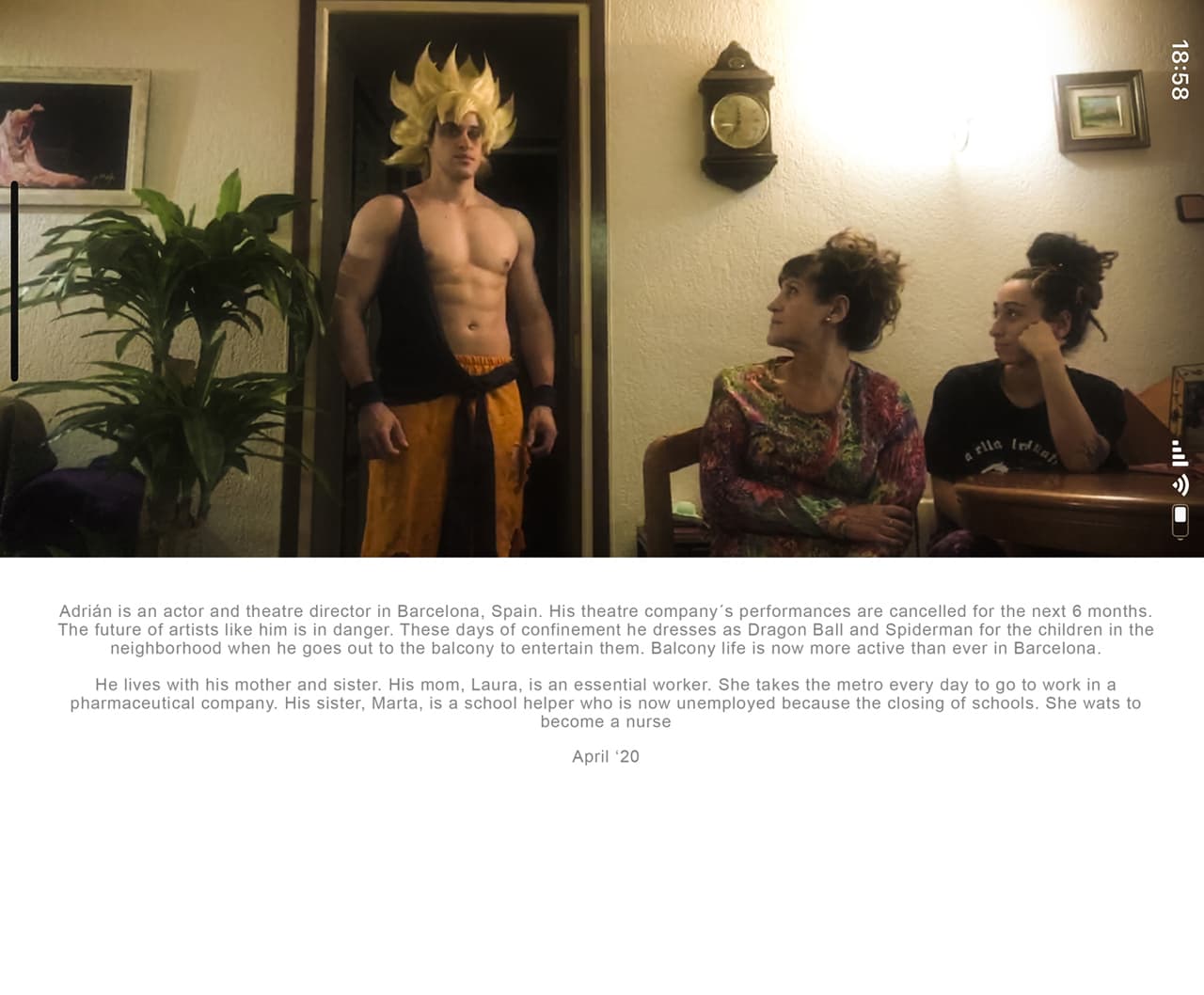
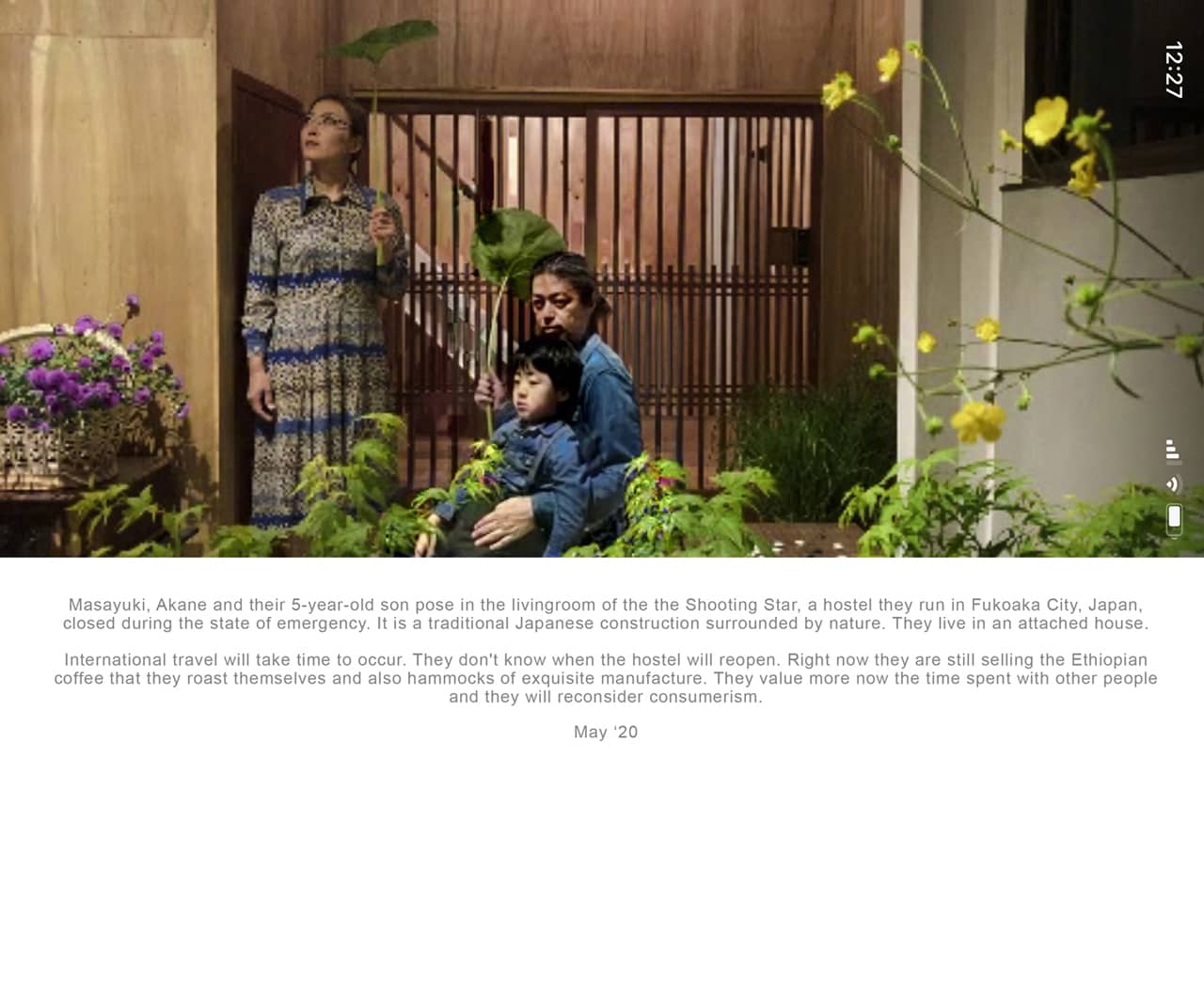
Do you have documented the process of how the images were made, the WhatsApp exchanges …?
Yes, I have more information than I have been able to manage. Then I spent another month writing, editing, and submitting to contests. I spent a lot of money on contests, you know you have to pay the fee, and I got as far as I could. I used the money raised from the crowdfunding to do this and pay the rent while dedicating myself body and soul.
Did you think about how to show it? In photography, the final result is as valuable as the process.
I always thought of a book format. I have the final photos, the making-of, the locations that the participants sent me, and an image of myself here, in the house itself. I made the decision not to call the newspapers, not to make a product to consume today. I think it is a project that remains as a document and that in a year or two it will become important. It is our first confinement, something we could never have imagined. This project for me is a philosophical essay.

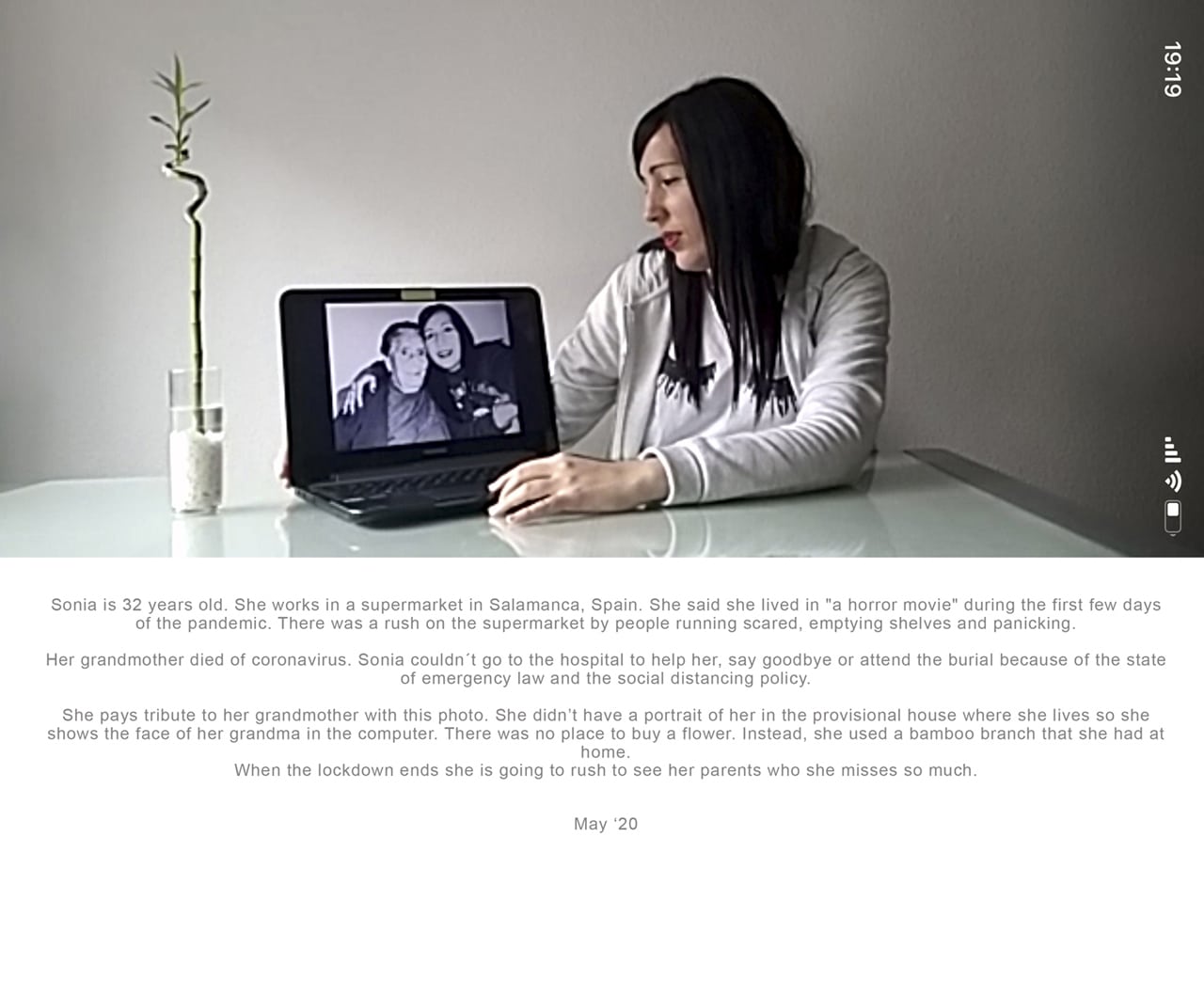
How to take photography in confinement is quite a question. There is also an approach to photography as one of the few things that survive. The world was already turning liquid, and the pandemic accelerated that brutally. And the photography was like resisting, but that’s it. That is why your work leads to that level of liquidity in which we live.
That gassing, I name it. I thought: “To what extent can I dematerialize as a photographer and telework without leaving my home, without touching a camera, or without real presence?” It has been like traveling but in a dematerialized way.
In The Game, Alessandro Baricco tells how the network is doubling, first modifying it and then eating the world. He argues that there is no longer a difference between virtual and real, that these are anachronistic concepts.
It’s the Matrix. I think there is a future for this idea that there are two parallel worlds and that people live, make transactions, have relationships, and get married in that other “beyond.” It’s not that I love it, it’s artificial. Do you know when you are driving at night and suddenly an animal crosses your path and you stop? He stares at you, immobile and vulnerable, illuminated by the spotlights.”
With this project, I have the feeling of having been this light illuminating people who from that first confinement looked surprised and confused before an uncertain destiny. We didn’t know what was coming our way.
Narrativas Limítrofes is a project carried out with the support for the promotion and dissemination of Spanish art from:
